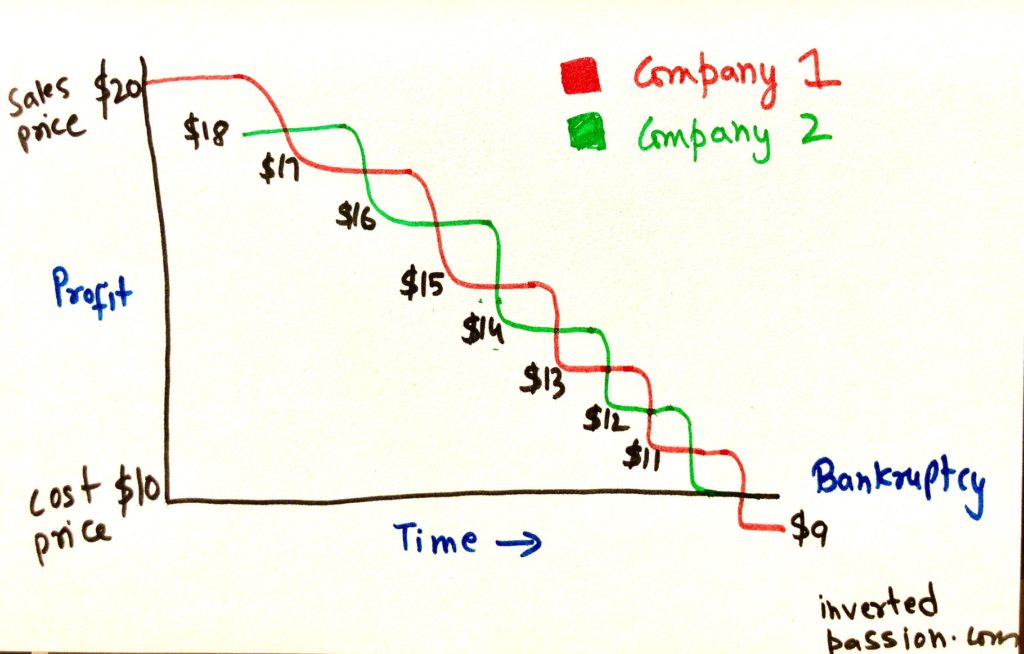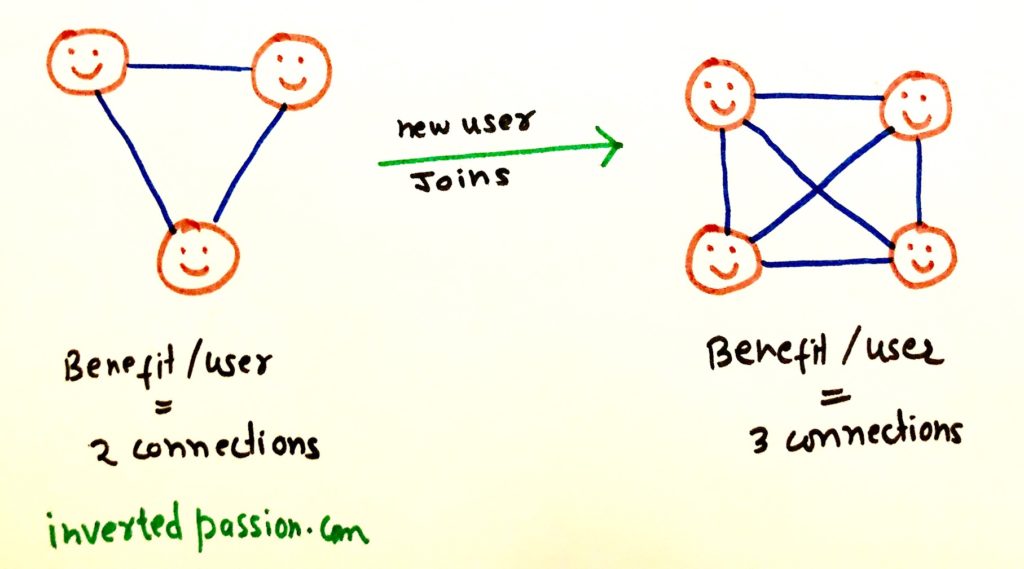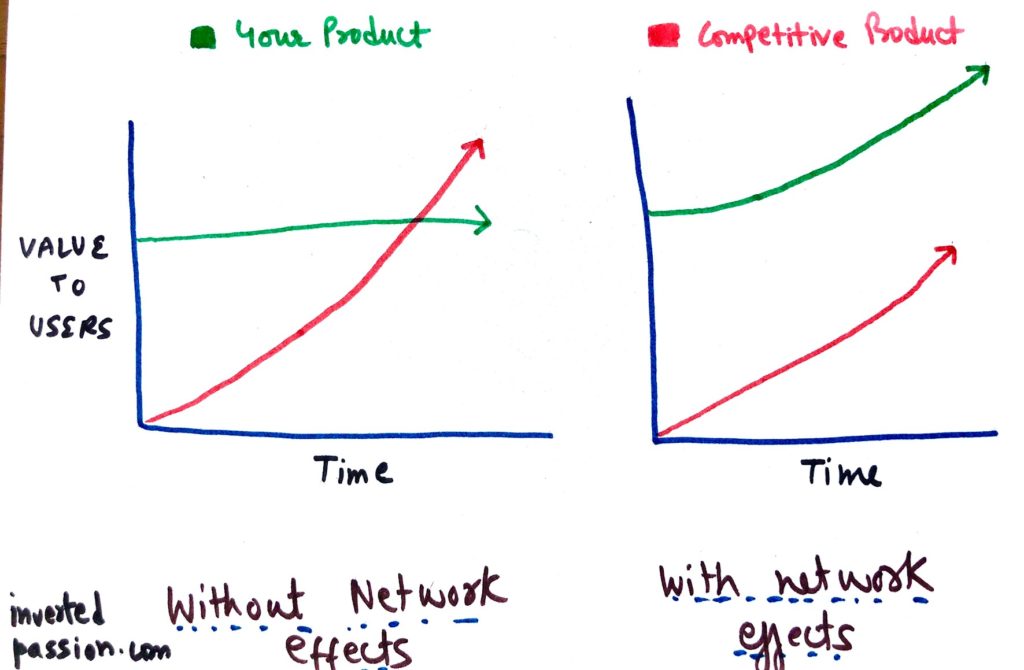If there’s one thing that customers dislike, it’s the barriers in switching between competitive products. As customers, we want to retain our freedom. However, as entrepreneurs, we are incentivized to curtail that freedom. As I wrote earlier, head to head competition in a market pushes profits to zero. To make a profit, an entrepreneur needs to find a way to keep customers and competition away from each other.
There are two ways this separation can happen:
- Prevent competition from entering into your market
- Prevent customers from switching to a competitor
Obviously, these tasks are hard in a free market (and that is why market pays through the roof for companies with a sustainable competitive advantage). Unless you sell drugs, you can’t (and shouldn’t) hire an assassin to prevent competition. Nor, can you (and should you) threaten your customers with dire consequences if they switch.
So, what should an entrepreneur do? Short answer: create legal monopolies. As the name makes it sound, doing that is extremely hard. In this article, I explore different ways of doing it.
(A caveat before we start. I am not a lawyer and by legal monopolies, I mean what is generally allowed by law. Law has changed over the years: at one point in time, doctors used to smoke cigarettes. So interpret my suggestions in light of the fact that law evolves and our collective consensus of what constitutes good ethics also evolves.)
The million dollar mistake entrepreneurs make
When entrepreneurs are starting out, their mind is full of ideas on how to acquire customers and satisfy them. I have interacted with hundreds of early-stage entrepreneurs and designing their products to prevent customers from switching to competition isn’t on their mind. At early stage, they just want someone, anyone, to buy their product. If they hit market-product fit, they get busy with scaling the business. So, most entrepreneurs don’t think about creating defensible business until it’s too late.

It was certainly the case with me when I got lucky with VWO. After initial success, my goals shifted to increasing leads, growing customer base, increasing MRR, and building the team. Since business was growing month over month for years, I became complacent. Entrepreneurs sniff profit generating markets and VWO’s market (A/B testing) was a magnet for them. So when competition inevitably intensified in A/B testing market, I realized that for a long time, we hadn’t thought of switching costs.
We had built VWO to be really easy to setup and use, so counterintuitively, we had made switching to other A/B testing tools easy for our customers. Ouch!
What entrepreneurs need to keep in mind is that their markets will eventually attract competition who will attack their core business. This is the eternal law of markets. So, sooner they design their business to sustain or prevent such attacks, the better it is.
Network effects: preventing competition from entering in your market
One reason why customers switch to competitive products is because they get higher value from competitors at a less cost.
You can fight competition if you keep increasing the value that your customers get from your products. If this value delivered to your customers is increasing over time, competition will have a moving target to cross before they can enter your market. This option is the innovation treadmill that companies like Snapchat prefer. (The danger in this approach is that since innovation is by definition unpredictable, one cannot count on it).

Instead (or in addition to) continuously innovating, you can also continuously increase benefits provided to customers by designing products to use network effects. I had written a detailed article on types of network effects earlier. Network effects ensure that with each new customer, the value delivered to each existing customer increases. Network effects is why Bing never caught up with Google.

Network effects for social networks like Facebook are simple and easy to understand: users join it because their friends are on it. But what about non-social networks? How can they design their products to make sure of network effects?
Here are some suggestions:
- Use data. Can you use data collected from each user to build algorithms that give benefit to all users? For example, Google uses your click data to improve results for all users. Your competitors will start from zero data state and it’ll be hard for them to catch on
- Develop an ecosystem of complementary technologies and services. Can you create an ecosystem of services (like partner networks) or technologies (like apps that integrate with your product) that competitor will have a tough time replicating?
- Create a community of users. Can you create a community of users around your products or services where they learn from each other? If you enable users to exchange best practices, technical help or use cases, your competitors will find it hard to replicate that community. (Essentially you’re creating a social network around your products) Conferences organized by Salesforce (Dreamforce) is a great example of this.
Beyond network effects, you can use other tactics to make it hard for competitors to enter in your market:
- Patent core technologies. I’m personally not a big fan of patent-everything philosophy, but if you can protect the intellectual property that’s responsible for value creation for users, do that. This increases the cost for competitors to design and deliver competing services because they’ll have to use novel techniques
- Lock up exclusive distribution channels or partnerships. If you have an opportunity to block competitors from accessing essential resources or distribution channels, do it
- Favorable physical location. Remember: not everything is digital. Presence of Walmart of McDonald’s precludes other potential stores or fastfood chains in near vicinity. Location (even of an office) is an automatic moat (that prevents competitors from snatching your workforce).
- Reduce costs to absolutely minimum. If you are able to reduce your costs to an absolute minimum, you retain the option of undercutting your competitors when they enter. This strategy requires operational excellence and is used by Walmart and Amazon (Jeff Bezos famously said: Your margin is my opportunity. So if you minimize your margins, your competitors aren’t incentivized to enter into your market.
Moats: preventing customers from switching to your competitors
The second aspect of building a defensible business is to ensure that the cost of switching to a competitor is non-trivial for your customers. If customers don’t have to think twice before switching, they will. Some companies use dark UX patterns for doing this.

I’m not advocating this. Forcing users to go through hoops when they’ve made a decision only generates mistrust.
What I’m advocating is to make the customers invested in your product to the level that it becomes really expensive for them to make a switch. Warren Buffet lovingly calls these switching costs as moats. And here’s how highly he thinks of them:
“So we think in terms of that moat and the ability to keep its width and its impossibility of being crossed as the primary criterion of a great business. And we tell our managers we want the moat widened every year. That doesn’t necessarily mean the profit will be more this year than it was last year because it won’t be sometimes. However, if the moat is widened every year, the business will do very well.”
How do you build moats?
- Increase your customers’ time and monetary investment into your products. The more investment (of time, money, reputation) a user does in a product, harder it is for him / her to switch.
- Store data that’s valuable to customers (but is hard to export). This is a moat used by Salesforce or Photoshop. Both products provide value by letting users store complex data that isn’t easily exportable. By storing data in your product, thanks to the endowment effect, the customer starts valuing your product more.
- Involve customers’ colleagues (or friends) to interact with your product. More the number of people dependent on a product in an organization, the harder it is to take it away. This is why in a Netflix and Apple Music lets you create a family account. This is also why we don’t charge for extra users in VWO. Every new user interacting with VWO in customers’ organization increases the switching cost.
- Get integrated into their systems and make using your products into a habit. The tools and systems that customers use for recording should automatically trigger usage of your products. Once this chaining happens, it’ll be hard for them to break the workflow and their habits for a competitor.
- Personalize your product to the user. Make competitors start from group zero once they acquire a customer and your lead with the customer will increase over time.
- Customize the product for specific user’s use case. App stores (like iOS or Salesforce app store) do a great job here as the collection of apps that a specific user uses is a unique set. Getting the same set of apps or functionality with competitor is difficult
- Invest in train users for advanced use cases. This is a moat used by Excel and most programming languages because once you invest time in learning these tools, it’s hard for you to move to a new one. As former Microsoft employee Terry says, complexity is the moat.
- Continue investing in a brand so that the user feels great amongst his/her social circle. This is a moat created by luxury products such as Audi. They want to create brand awareness amongst people who cannot afford their products so that the owners of their products feel about using them. If you make user feel good about himself/herself everytime s/he uses your product, you have a solid moat!
What products are hard to replace in YOUR life?
I have a question for you:
In spite of knowing cheaper/better alternatives, what products or services in your life have you found are hard to replace? Why?
I'll RT interesting replies.
— Paras Chopra (@paraschopra) February 13, 2018
In the twitter thread above, see what other people have responded and feel free to add your response.
Join 200k followers
Follow @paraschopra